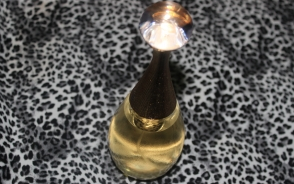 You may have heard of some people using tea tree oil for fingernail fungus. But does it work?
You may have heard of some people using tea tree oil for fingernail fungus. But does it work?
Fingernail fungal infections are commonly seen in adults who use public swimming pools, showers and gyms. The infections occur when a group of fungi called dermatophytes grow in the dead tissues of fingernails and the surrounding layers of skin.
Dermatophytes live in warm and moist environments and enter the body through small cuts or through gaps between the nail and nail bed. Other risk factors include old age, reduced blood flow to the fingernails, heavy perspiration, psoriasis and diabetes.
Tea Tree Oil
Topical application of tea tree oil to the infected fingernail can help resolve the infection and treat the symptoms.
The oil is extracted from the leaves of the tea tree, or Melaleuca alternifolia, native to southern Australia. It has been used historically by the local aboriginal population to treat acne, fingernail and toenail fungal infections, lice, candidiasis, skin lesions, and dandruff.
Recent scientific studies indicate that tea tree oil can inhibit the growth of dermatophytes in a test tube. Some small clinical trials have shown that tea tree oil for fingernail fungus is effective and consistent. In one study, more than 60 percent of the participants noticed an improvement in their symptoms.
Use
Most doctors recommended topical application of 100 percent tea tree oil, two times a day for a period of six months to improve the appearance of the nail. Ointments and diluted tea tree oil solutions are not effective.
Side Effects of Tea Tree Oil
It is generally safe to use tea tree oil for fingernail fungus, especially in adults. However, the oil contains a chemical known as 1,8-cineole, which can irritate the skin and cause allergic reactions in sensitive individuals. Patients should seek immediate medical advice if they experience skin rashes, hives or shortness of breath. These are signs of a serious allergic reaction.
Precautions
Individuals should not take undiluted tea tree oil for fingernail fungus by mouth. It can lead to complications such as confusion, inability to walk, rash and coma. Patients taking other medications should talk to their doctor before using tea tree oil for fingernail fungus to avoid possible drug interactions and complications.
Remember, that the United States Food and Drug Administration (FDA) does not regulate the production and distribution of herbal supplements. Tea tree oil for fingernail fungus should be purchased from reliable suppliers and used cautiously. It is also important to consult a licensed healthcare professional before using it.
Prognosis
Although tea tree oil for fingernail fungus is effective and generally safe in adults, it acts very slowly. Most patients see benefits only after three months of regular application. Others may take as long as six months to notice a significant difference.
Toe Nail Fungus Symptoms
Fingernail fungal infection may begin as a small white or yellow spot under the surface of the nail. The pathogen may eventually spread and alter the appearance of the entire area.
Symptoms depend on the type of fungus. Fingernail infections may make nails:
• Thick
• Brittle
• Distorted
• Dull
Dark-colored debris may collect under the nails and change their color to black or dark brown.
When left untreated, fingernail fungal infections may become painful and cause permanent nail damage. The condition may lead to serious complications in immunocompromised individuals with diabetes, cancer or AIDS.
Management
Doctors may recommend topical ointments to treat fungal infections. It is important to clean and dry the nails regularly. Individuals with reduced immunity may benefit from oral anti-fungal medications as well.
Surgical interventions are rare and are used to treat severe and painful infections. Many patients also rely on herbal ointments and products containing tea tree oil for fingernail fungus treatment.


